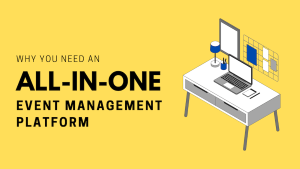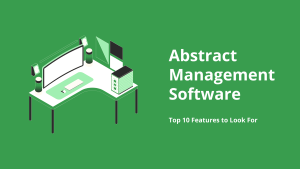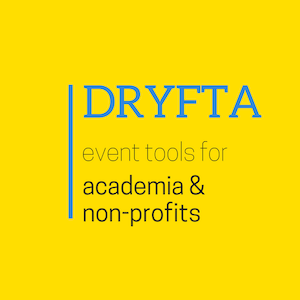Launching a compelling call for abstracts is one of the most critical steps in planning a successful conference or event. It sets the stage for attracting high-quality submissions, engaging thought leaders, and securing impactful speakers. But how do you craft a call for abstracts that captures attention, generates buzz, and converts recipients into contributors?
By following a structured approach and leveraging effective communication strategies, you can maximize your submissions and ensure your event draws the best minds in your industry. Here’s a detailed checklist to help you launch a successful call for abstracts.
1. Craft a Clear and Compelling Message
The foundation of your call for abstracts lies in clarity. Your recipients need all the essential information upfront to decide if your event is the right fit for their work. Include these key details:
- Event Name: Clearly state the event’s title.
- Date and Venue: Provide specific dates and location details.
- Link to Event Website: Direct recipients to a dedicated site for more information.
- Committee Members and Judges: Highlight notable figures involved in evaluating submissions.
- Topics and Themes: List the themes and topics covered in your event.
Additionally, emphasize standout features such as renowned keynote speakers or unique opportunities for networking. The goal is to convey relevance and value, helping recipients decide quickly whether to participate.
2. Use a Strong Subject Line to Grab Attention
Your subject line is the first impression recipients will have of your email. To improve open rates:
- Avoid generic phrases like “Call for Papers”—these often get ignored or flagged as spam.
- Create curiosity or urgency, such as, “Submit Your Groundbreaking Research for [Event Name] by [Deadline].”
- Keep it concise, ensuring the subject doesn’t exceed character limits to avoid truncation.
Remember, the subject line should spark enough interest to encourage recipients to open the email and learn more.
3. Target Your Audience Strategically
Avoid blasting your call for abstracts to a massive, untargeted email list. Not only is this ineffective, but it can also harm your brand and violate GDPR regulations. Instead:
- Start with individuals who have previously engaged with your events or content.
- Use email marketing tools to segment your audience by fields of expertise, demographics, or past participation.
- Maintain compliance by including mandatory unsubscribe links and respecting recipients’ preferences.
With targeted outreach, your emails are more likely to land in the inboxes of qualified candidates, boosting your chances of receiving high-quality submissions.
4. Detail the Submission Process
Make the submission process as clear and straightforward as possible. Confusion or complexity can deter potential contributors, even those who are highly qualified. Include the following in your email:
- Submission Deadlines: Specify clear dates to avoid ambiguity.
- Abstract Format: Mention word limits, required sections, and preferred file formats.
- Policies and Guidelines: Provide a summary of key rules to help authors understand expectations.
- Submission Portal: Link directly to the abstract management software.
This ensures potential contributors have everything they need to complete their submission seamlessly.
5. Avoid Relying on Images
While visuals can enhance your email’s appeal, many institutions and organizations block images in emails. Instead of risking an unprofessional-looking message, rely on:
- Clear, concise text that conveys your message effectively.
- Formatting techniques like bullet points and bolded text to make information scannable.
If visuals are essential, include them sparingly and always ensure the text stands on its own.
6. Highlight What’s in It for Them
Your recipients are busy professionals with packed schedules. To capture their attention, you need to make your call for abstracts worth their while. Highlight the benefits of participating:
- Prestige: Emphasize the opportunity to present at a respected conference.
- Networking: Mention the chance to connect with peers, industry leaders, and potential collaborators.
- Exposure: Point out that accepted abstracts will be published or presented to an influential audience.
If your event features notable keynote speakers or prestigious sponsors, mention them in your message. These details can significantly boost interest and participation.
7. Use Event Management Tools for Efficiency
Managing a call for abstracts involves juggling multiple tasks, from crafting compelling messages to tracking submissions. Event management software, such as Dryfta, can simplify the process by offering:
- Email Campaign Tools: To send targeted emails and monitor open and click-through rates.
- Abstract Management: A streamlined portal for authors to submit their work and for organizers to review submissions.
- Compliance Features: Built-in GDPR compliance to avoid legal risks.
These tools not only save time but also provide valuable insights into what’s working and where improvements can be made.
8. Follow Up Strategically
One email isn’t enough to ensure maximum participation. Plan a follow-up schedule to remind your audience about submission deadlines and generate excitement:
- Send a “Last Call” Reminder: Notify recipients of impending deadlines to create urgency.
- Share Success Stories: Highlight notable submissions or presenters from past events to inspire confidence.
- Update with New Announcements: Share updates such as additional keynote speakers or new benefits for participants.
Thoughtful follow-ups keep your event top of mind and encourage more submissions.
9. Build Buzz with Social Media
Extend your call for abstracts beyond email. Use social media to reach a broader audience:
- Share your event hashtag to encourage organic discussions.
- Post teasers, such as sneak peeks of the venue or announcements of featured speakers.
- Engage with your audience by answering questions about the submission process in real-time.
Social media amplifies your reach and adds a layer of excitement around your event.
10. Measure and Refine
After your call for abstracts has gone out, use analytics to assess its effectiveness:
- Track open rates to understand how well your subject line performed.
- Monitor click-through rates to measure interest in your content.
- Analyze submission data to identify areas for improvement in your messaging or process.
These insights will help you refine your approach for future calls, ensuring continuous improvement.
Set the Stage for a Successful Event
A well-executed call for abstracts does more than fill your event schedule—it sets the tone for a conference that inspires, engages, and delivers value to all participants. By focusing on clarity, targeting the right audience, and using tools to streamline the process, you can attract high-quality submissions that boost your event’s reputation.
Ready to launch your call for abstracts? Follow this checklist, leverage powerful tools, and watch as your inbox fills with submissions from talented contributors eager to make your event a success.






